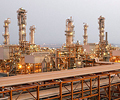

Some US refiners are considering adding sustainable aviation fuel to their renewable diesel production plans, spurred by higher demand from airlines seeking lower carbon footprints and the likelihood of increased policy support, some analysts said.
“Jet and diesel are going to typically be priced very similarly, so to entice RD producers to produce some volume of SAF, the government will need make the subsidies for SAF production higher than those for RD,” said Robert Auers, senior analyst at energy consultant Turner, Mason & Company.
The Biden Administration proposed Sept. 9 a $1.50-$2.00/gal federal tax credit for SAF, followed by release of an excerpt from the Build Back Better Act by the House Ways and Means committee on Sept. 10 proposing a $1.25/gal SAF tax credit.
Some refiners have expressed hesitation about adding SAF, concerned about lower margins and returns due to higher costs for additional equipment, lower value renewable credits, and lower prices for SAF.
But more incentives could make it easier to justify increased costs.
“In order to invest additional money to add SAF production capability, RD producers will have to feel confident that SAF will have more subsidies than RD over the long term,” Auers added.
Increased feedstock costs weigh on prices
As more new renewable fuels projects are announced, feedstock supply tightens and RD and SAF producers seek to lock in supply.
Earlier, Chevron inked a supply agreement with agricultural giant Bunge, to supply Chevron with 30% or about 7,000 tons of feedstock today, expanding to 14,000 tons in 2024 to meet growing output.
While lower carbon intensity feedstocks like beef tallow and used cooking oil are more valuable, soybean oil is most in demand due to availability, despite a drop off in production.
“US soybean oil production for 2021-22 was reduced by 290 million lb in the September World Agricultural Supply and Demand Estimates report to 25.42 billion lb due to lower soybean crush,” according to S&P Platts Analytics biofuel analyst Nabil Kapasi.
Kapasi noted imports fell by 50 million lb to 450 million lb, reducing supply further and supporting higher prices.
So far in Q3 2021, soybean oil prices are averaging 65.04 cents/lb, compared with the 52.13 cents/lb in Q2, according to Platts assessments.
While prices for renewable feedstocks declined recently, the dip is expected to be short-lived as storm-downed plants restart.
“We think downtime at two RD plants in Louisiana in the wake of Hurricane Ida was a likely contributor,” wrote JP Morgan analyst Thomas Palmer in an Sept. 14 research note.
RIN parity
RINs are credits bought by refiners and other transportation fuel suppliers under the Environmental Protection Agency’s Renewable Fuel Standard to meet renewable volume obligations, or RVO, that aren’t met by through blending renewables into gasoline and diesel.
SAF currently generates 1.6 D4 biomass diesel RINs, compared with RD’s 1.7 D4 RINs, giving RD the advantage.
So far in Q3 2021, RD holds a 16.55 cent/RIN premium over SAF, up from the 14.02 cent/RIN premium in Q2, Platts price assessment data shows.
“If SAF can qualify for the same RIN generation as RD and same LCFS benefit, the proposed extra $0.50/gal for the SAF blenders’ tax credit ($1.50 for SAF for $1 for RD) should be sufficient to justify investment at most facilities to produce some volume of SAF,” he said.
Under its Low Carbon Fuel Standard or LCSF, California gives credits for both RD and SAF, then layered on top of federal blending and RINs credits.
Auers said the SAF decision is based on evaluating the economics to produce SAF versus 100% RD, adding that most RD projects are being built with the ability to eventually produce some SAF easily, although some extra investment will still be needed.
“Most of the facilities, even with new investment, would not be able to produce 100% renewable jet easily, but could likely get to a about a 50/50 mix of SAF/RD with a fairly low amount of investment,” Auers added, noting once the investment made refiners would be able to make “operational changes to vary this ratio as economics dictate.
Chevron is co-processing 2,000 b/d of biofeedstock at its El Segundo, California, refinery, producing its first batch of SAF last week, according to Mark Nelson, head of downstream speaking on Chevron’s Sept. 14 Energy Transition Spotlight webcast.
Chevron expects to produce 100,000 b/d of RD and SAF by 2030, which includes supplying all Chevron’s US jet fuel customers with 5% SAF blend.
“While policy support has not yet stimulated the SAF supply chain, these activities prepare us for the future,” Nelson said.
While Chevron has collaborations underway with Delta Airlines and Google to track SAF emission benefits, “the company will likely wait for more policy clarity before making significant investment in SAF,” JP Morgan analyst Phil Gresh said in a Sept. 14 note.
 Source: Platts
Source: Platts